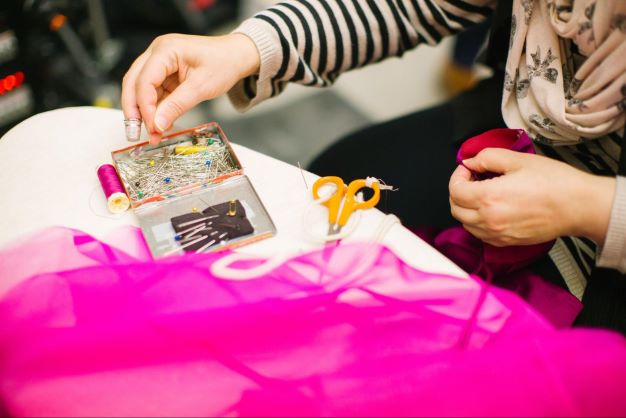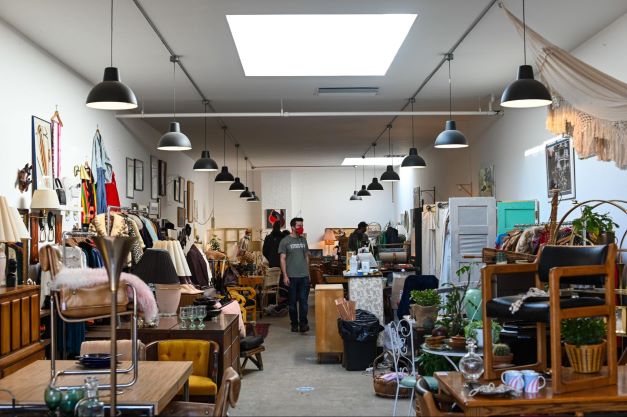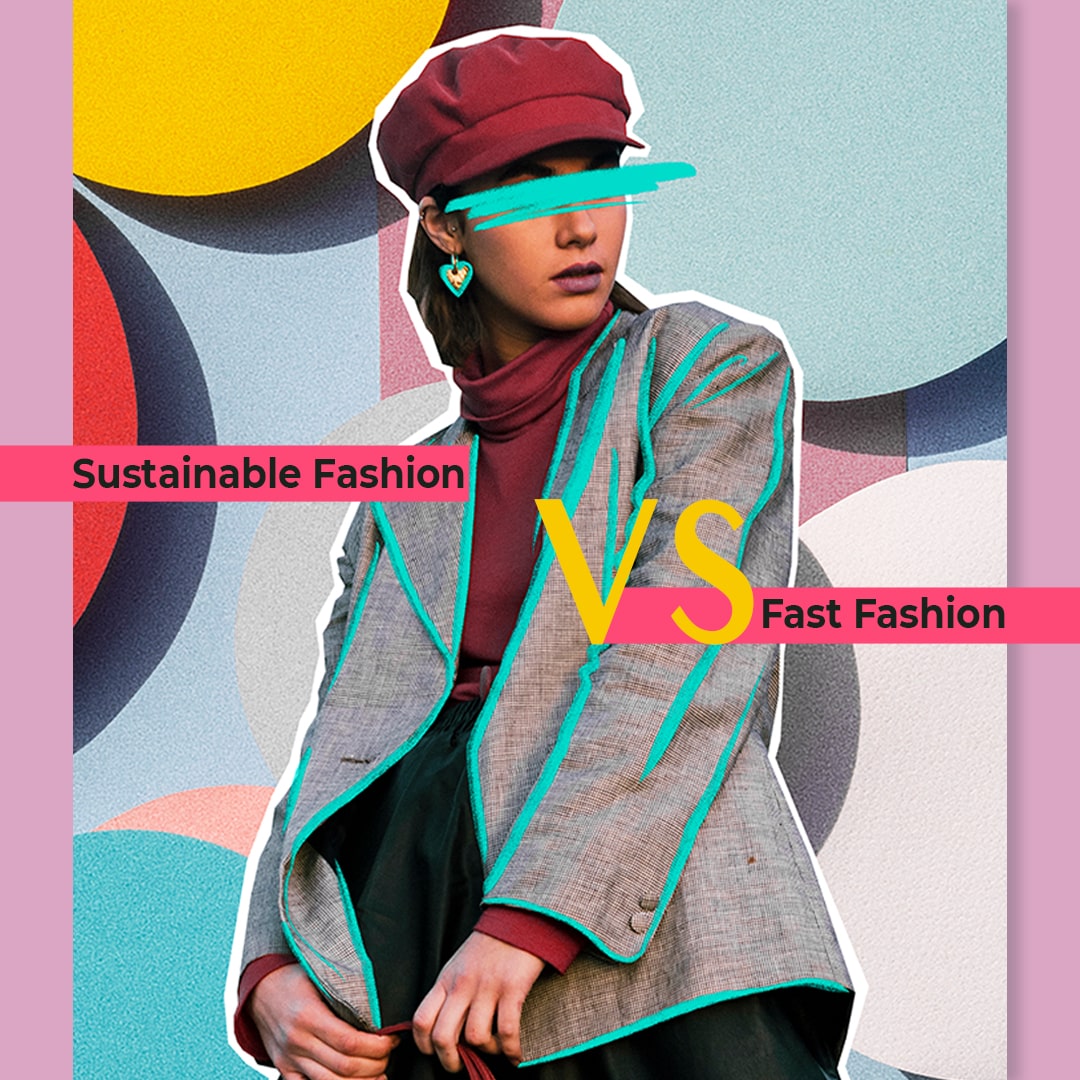CATEGORIES
#Breaking Stereotypes #Gen Z #Well-BeingOverview
- In the current era of following trends, fast fashion has become the norm.
- However, fast fashion results in overproduction and a massive waste of cloth and labor, causing harm to the environment.
- A better alternative is sustainable fashion, such as using handmade garments, thrifting, donating and trading.
In the lightning-speed internet era, we are exposed to the world and the idea of authenticity. With this in mind, we are compelled to always follow the current trend, thus creating fast fashion along the way. However, in light of our current environmental situation, an increasing number of people are abandoning fast fashion in favor of a more sustainable alternative: sustainable fashion.
The Horror of Fast Fashion

Fast fashion is a term used to describe the clothing industry’s business model of replicating recent catwalk trends and high-fashion designs, mass-producing them at low cost, and bringing them quickly to retail stores while demand is highest. With the rise of fast fashion, there has been a significant shift in how we buy our clothes. We have an abundance of clothing to choose from for a very low price. Because clothes have become extremely cheap, we don’t care for them as much as earlier generations did. Not only does this result in the making of inferior quality clothes, but after a particular trend ends, all the stores wipe out last season’s products and throw everything into the landfill. This is done to retain the hype over the brand, making the clothes more “valuable” than if they were donated to the shelter or to other people in need.

The traditional fast fashion clothing lines (for example, H&M and Zara) exploit the idea of trends, but not as explosively as the next generation of fast fashion retailers. During the pandemic, when we couldn’t physically go to stores to pick out clothes, some of us turned to online retailers. Because they don’t have the same costs as traditional stores (including shipping and managing logistics), they can mass produce a huge amount of clothes that are always in trend. Additionally, the fashion guru community on TikTok and YouTube encourages the overconsumption of fast fashion through their haul videos. Although the average consumer will not opt for extreme purchases (from a few hundred up to thousands of dollars), some want to launch their careers as influencers, as if the ridiculous spending on fast fashion will push them higher in the social hierarchy.
Overproduction has always been a problem in every industry. The fashion industry overproduces by 30-40% each season, which is equivalent to more than 120% of what the public needs each year. This makes its contribution to global carbon emissions roughly 10%, along with being the world’s second-worst offender in terms of water pollution. But, how much waste does the fashion industry actually produce? To put it in perspective, they produce roughly 80 billion garments each year, contributing to 52 micro-collections. On average, we only wear something seven times before throwing it out, and only 20–30% of the garments in our wardrobes are regularly worn.
Most often than not, brands endorsed in fast fashion do not give credit to the artists who created the design. The public calls them out on the internet for this behavior, but we cannot completely cancel them due to the convenience they give customers.
Sustainable – Not Just Fashion, It’s a Lifestyle
During the pandemic, when we were forced to stay indoors, we couldn’t help but notice the situation we were in and how much our actions affected the environment. Many people slowly turned toward a more sustainable lifestyle. Sustainable living means understanding how our lifestyle choices impact the world around us and finding ways for everyone to live better. And with the fashion industry being one of the most wasteful, we need to endorse the use of more sustainable methods. Here are a few methods that have slowly gained recognition.
- Handmade Garment: During the lockdown, when people rushed back into their handicraft hobbies, crafts like crochet, sewing, embroidery, and knitting became so popular that you can see people doing them everywhere on social media now. Started as a form of escapism, these handmade hobbies are slowly replacing the need for fast fashion and making room for slow fashion to thrive. People can now make the clothes they want without breaking the bank in the name of brand names or fast fashion. Moreover, every piece they make is unique and carries a special meaning.

- Thrifting: This method of sustainable fashion is not something new, but during the earlier years (back in the 90s and early 2000s) when fast fashion was on trend, thrifting got a really bad reputation. Thrifting was looked down upon as the only way for poor people to purchase clothes and got tagged ‘tacky’ and ‘dirty.’ It took years, but we now realize the benefits of thrifting. When we thrift, we actively stop those products from going to landfill and thus reduce our carbon footprint on the planet. Besides, you can find some hidden gems in these stores, for example, discontinued goods.

- Donate and Trade: Unlike thrifting, donate and trade focuses on what you give to others rather than what you receive. We all know how much the lockdown affected some of us, and by using our privilege to help and support the less fortunate, we are contributing to someone’s happiness and thus making the world a better place for all.
As mentioned, when COVID-19 started, it affected many of our lives. People’s job security crumbled as they got laid off or fired. Sustainability slowly opened up opportunities for people, in that they could make a career out of art and garments. These artisans also form the community that evolves around green careers to help others learn about the art of craftsmanship.
Here at Girl Power Talk, we encourage a sustainable lifestyle by creating a platform for people to showcase their unique works of art. Recognizing and nurturing everyone’s efforts in creating content that’s close to their hearts is important to us and contributes to our growth culture, which supports different forms of creativity.
Conclusion
Sustainability is not just fashion; it’s a lifestyle. Adapting to the above mentioned methods of sustainable fashion is not only unique and eco-friendly, but it also helps support the livelihood of local artisans. So what are you making today?


